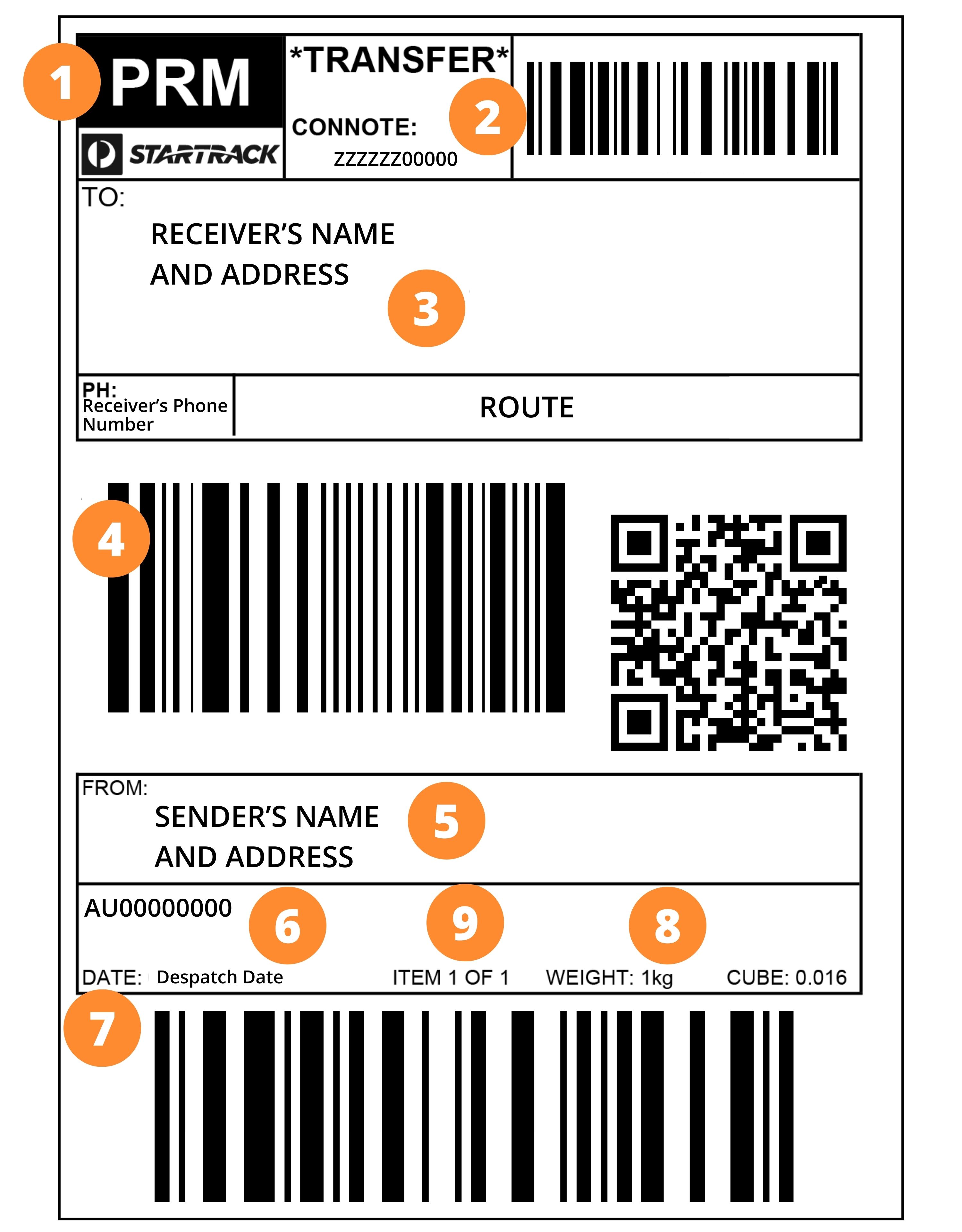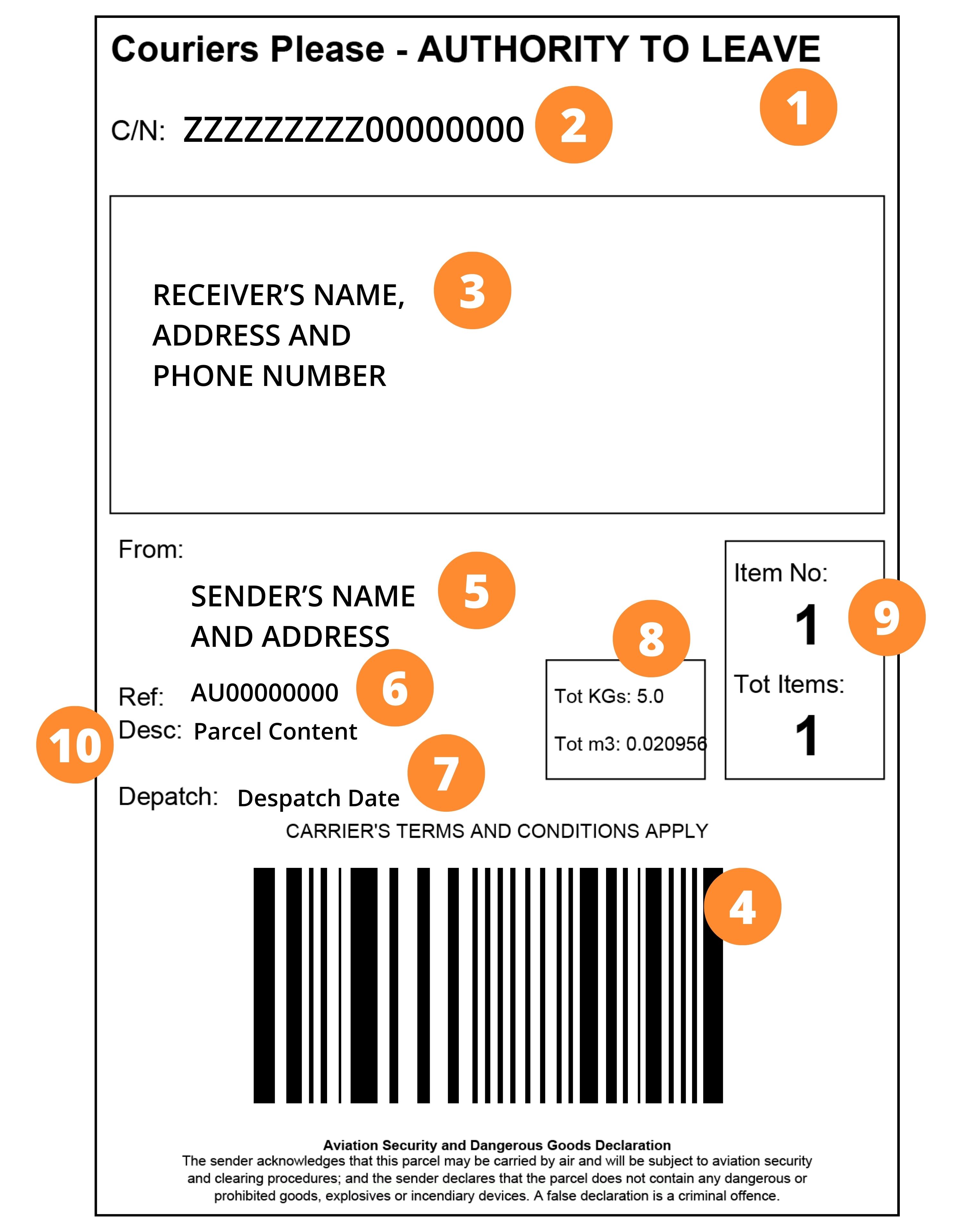Shipping labels are the unsung heroes of ecommerce businesses.
These stickers play a vital role in getting your parcel into the hands of customers. You might believe they are easy to construct, and perhaps you underestimate their value. But incorrect shipping labels can lead to delays in deliveries, additional costs you didn’t count on and cause shoppers to stop doing business with you.
In the world of ecommerce shipping, precision matters. Paying close attention to your shipping labels, and the information on them, is critical.
In this article, we’ll cover the essential criteria for shipping labels and their purpose and functionality. You’ll learn the intricacies of creating, printing, and correctly placing these labels on your packages.
We’re even sharing valuable insights that will protect you from the risk of undelivered packages so you can save time and money as well as experience hassle-free shipping.
These are the shipping label facts you need to know.
Why Shipping Labels Are Important
Shipping labels are a guiding light for courier providers. It contains all the necessary information to get a parcel from its initial destination into the hands of the customer. One missing or incorrect detail can trigger a series of unfortunate events, including:
- Delays in transit: Parcels with labels that are incorrect, wrinkled, or damaged in a way that obscures the label may remain at distribution centers, or become ‘lost in transit’, leading to customer frustration.
- Incorrect deliveries: Without an accurate freight label, parcels might end up on an adventure to the wrong destinations.
- Lost parcels: In the worst-case scenario, packages without shipping labels could vanish, leaving both customers and businesses at a loss.
- Surcharges: Incorrect placement of shipping labels can mix up parcels within the same shipment, potentially resulting in extra freight charges. Proper labeling helps locate parcels that are 'lost in transit' since the labels contain specific dimensional information of the package.
Customers who don’t receive their parcel in a timely fashion or at all might not give you a second chance. There is a possibility they will leave negative reviews, rant on social media and even ditch you for one of your competitors.
The Key Components of a Shipping Label
Navigating the different parts of a shipping label can seem complex at first sight, but once you understand the core components, it becomes easy to understand.
Keep in mind that every courier has different structures and sometimes unique information they include on their shipping label. Here are some of the core components on most shipping labels, however, these will not always apply to every courier.


- Delivery Type: This typically includes the name of the courier handling the delivery. Additionally, it may specify the type of service like "authority to leave," indicating whether the courier can leave the package without a signature.
- C/N (Consignment Number or Connote): Think of this as the parcel's unique ID. It's the tracking number you'd use on the courier's website to monitor the package's journey.
- Receiver Information: This section is all about the destination. It includes the recipient's name, address, and sometimes contact details, ensuring the package reaches the right hands.
- Barcode/QR Code: These are scannable codes for the courier that facilitate quick processing and tracking during transit. A word of caution: Ensure nothing obstructs or damages these codes. Any stickers or scratches can hinder scanning, leading to potential delays.
- Sender Information: Just as crucial, this section details the origin of the package. It includes the sender's name, address, and contact details.
- Reference Number: This is essentially the order number. If you’re using the Interparcel platform this will be the number you use to track your orders when using our branded tracking feature. This reference number will be automatically sent to the receiver so long as the sender has ticked the box while processing the order on our platform. Note: For some couriers like UPS and DHL Commerce, this might not be visible on the label. However, it can be located in the 'Shipping Manager' under 'My Orders'.
- Despatch Date: A timestamp of when the package began its shipping journey, helping both senders and receivers estimate delivery times.
- Weight/Cubic Weight/Dimension: This section provides details about the package's weight, and sometimes dimension, which can be important for the courier during transit.
- Number of Items: A quick tally of how many parcels belong to 1 order.
- Parcel Description: A brief summary of the contents of the package.
How to Create Shipping Labels
Many couriers provide an online platform for generating shipping labels. Once you've created a shipment with your chosen courier, the necessary details are automatically added to the label.
Simply access the website, confirm the details, and download the label. Once printed, you'll need to cut it out from the A4 sheet and affix it to your parcel.
Use a Third-Party Solution
Perhaps the best solution is to utilise a multicarrier shipping solution. Platforms like Interparcel are designed to provide you with everything you need upfront, so you’re spending fewer hours on shipping and more time growing your business.
With Interparcel, you can effortlessly select your preferred courier service and provide all the necessary shipping information in one place. Our platform takes care of the rest, automatically adding the required data onto the label templates required by your chosen courier.
All you need to do is integrate your ecommerce store or marketplace, and you'll gain access to shipping technology that automatically uploads all your order information into our platform, streamlining your ecommerce shipping strategy and overall fulfilment process. In addition, we have automation software designed to slash fulfillment times even more, by up to 80%.
How To Print Labels for Shipping
You have a choice to make. There are two primary options to consider for printing your shipping labels. There is the traditional inkjet printer you’ll find in most homes and offices. The other option is a thermal label printer. Here are the pros and cons of each choice.

| Type of Printer | Pros | Cons |
| Inkjet or laser printer |
|
|
| Thermal label printers |
|
|
Whether you choose the inkjet or thermal printer, Interparcel’s Print Manager is compatible with both models. Instead of downloading dozens of PDFs of shipping labels, you can print them directly from our platform.
Choosing a Thermal Label Printer Resolution
Printer resolution, measured in DPI (Dots per Inch), determines your shipping label’s clarity. It’s particularly important for barcodes, which require precise scanning and readability. While standard 203 DPI printers are excellent for text, numbers, and codes, higher-resolution options like 300 DPI or 600 DPI allow for more data in limited spaces and can enhance barcode scanability.
Volume and Speed
Some printers are designed for high-label output, while others are better suited for smaller volumes. If your thermal label printer is the hardest working piece of machinery in the office, speed is a critical factor in maintaining production efficiency.
Long-Term Cost, Maintenance and Operational Considerations
It's tempting to choose a printer solely based on upfront costs. However, the long-term expenses must be weighed in. Additionally, setup time, training requirements, and ease of maintenance should be part of your cost assessment.
Connectivity Options
USB connections are popular for linking printers to PCs, while ethernet connectivity is necessary when multiple users need simultaneous access. For mobile or portable printer needs, Bluetooth or Wi-Fi connectivity is essential for pairing with PCs, smartphones or tablets.
4 Tips For Shipping Label Best Practices
Whether you’re designing your shipping labels or printing them directly from Interparcel, ensure you follow these best practices every time you send a parcel.
1. Comply With Courier Regulations
Before you begin shipping goods, it is essential to familiarise yourself with the various rules and regulations associated with your particular items. Consider aspects such as fragility, perishability, hazardous materials, and special instructions for your shipments.
An excellent place to start is by checking Interparcel’s restricted and prohibited items. It not only displays the criteria for each courier company but also for the destinations they deliver to, both domestically and overseas.
2. Right Label On The Right Parcel
Attaching the wrong label to a parcel can lead to complications in the shipping process.
This error can cause major delays, result in the parcel being delivered to an incorrect address, or potentially lead to a misdeclaration surcharge. It's essential to ensure that each label corresponds accurately to its intended parcel to avoid these disruptions or added costs.
3. Clear Label Placement Without Obstruction
Correct label placement is essential to ensure that couriers can easily see the label and scan the barcodes without any issues.
To achieve this, stick your label at the upper portion of the parcel, preferably in one of the corners. Ensure that the shipping label is oriented with the barcode facing upward and aligned with the direction that scanners naturally read.
Avoid any overlapping of labels or positioning them over the edges of the package, as this can obstruct visibility and scanning.
4. Secure Your Label Properly
Ensuring your shipping label is securely attached to the parcel is critical. Labels that fall off can result in lost packages and the inconvenience of having to resend or refund orders. This is especially important for those using A4 printers, as the entire sheet isn't always adhered properly to the package.
Make sure you securely sticky tape your labels along every single side, without obstructing any information. This step is vital to prevent your parcel from becoming another lost item in the shipping process.
Understanding the Value of Shipping Labels
Creating and deploying shipping labels should not be seen as a formality but as a vital component of your fulfilment process. These attachments ensure your parcels are delivered to the correct destination promptly and securely, resulting in high customer satisfaction.
They require thorough research, attention to detail, and impeccable accuracy. Failure to meet these criteria can be costly to you and your customers. Shoppers may not return if the shipping label is why their parcel is delayed or lost in transit.
When you ship parcels with Interparcel, you can print your labels directly from our platform, and your customer’s address will be automatically validated to ensure the package arrives at the desired destination. Create your free account today and use our user-friendly and time-saving tools to optimise your shipping processes and delight your customers.










 Facebook
Facebook Twitter
Twitter Instagram
Instagram Linked In
Linked In YouTube
YouTube